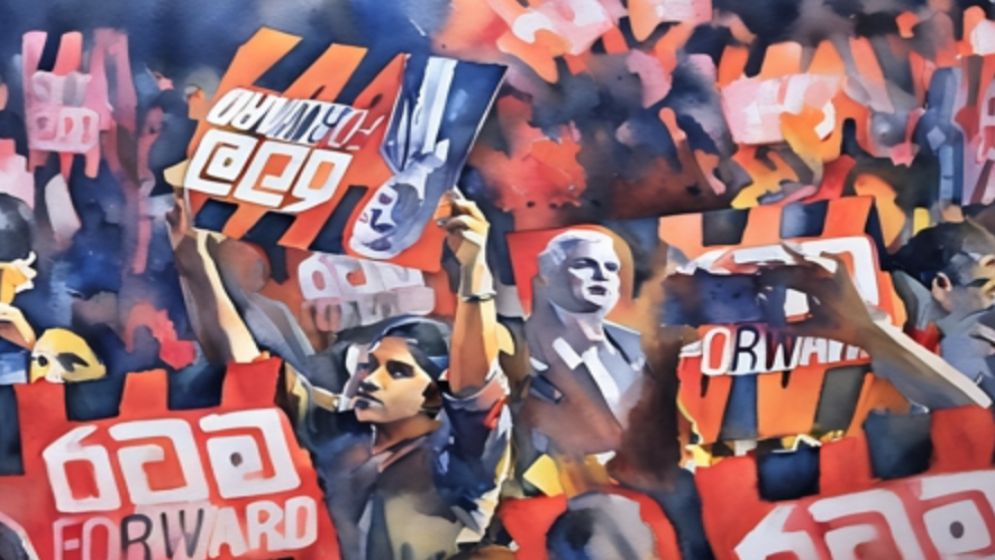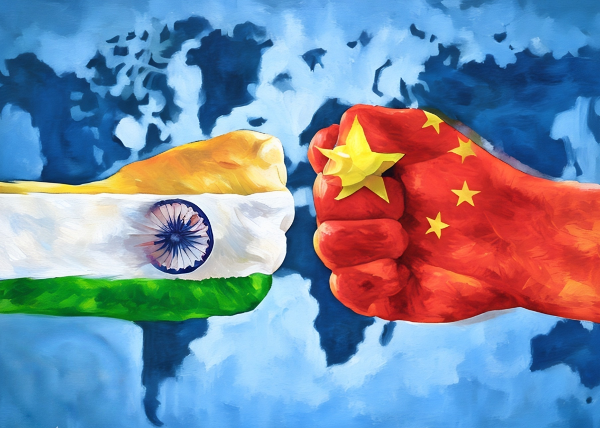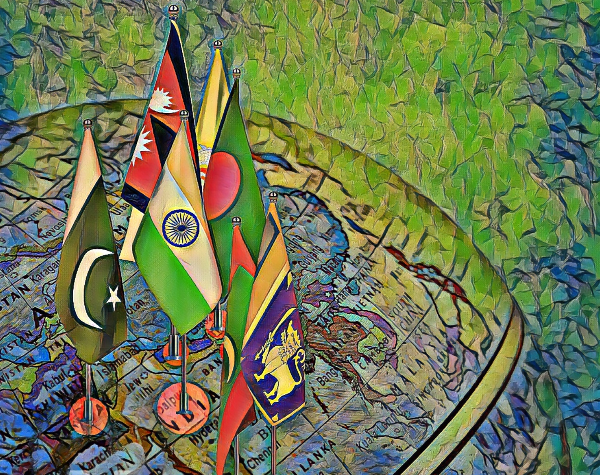Red wave in Sri Lanka: A further sign of hostility for India’s neighborhood after Hasina’s ouster

The red wave that swept across Sri Lanka on September 23, 2024, marks an unprecedented moment in the country’s history.
Anura Kumara Dissanayake, popularly known as AKD and leader of the Janatha Vimukthi Peramuna party (JVP), has won the recent elections and will be taking over the presidency from his predecessor, Ranil Wickremesinghe.
This year’s elections in Sri Lanka took an interesting turn, as it was the first time in Sri Lanka's history that no candidate secured a majority.
Incumbent president Ranil Wickremesinghe participated alongside Dissanayake and Sajith Premadasa but garnered only 17.27% of the votes in the initial round.
Premadasa received 32.76%, while Dissanayake led with 42.31%. As no candidate achieved over fifty percent, the election proceeded to a second round.
Ultimately, the 55-year-old JVP leader, Disanayake, secured 55.89% of the votes, making him Sri Lanka's first left-leaning president.
Indian media outlets have begun expressing skepticism about AKD, particularly regarding the potential impact of his election on Indian interests in the region. Concerns have been heightened by the growing influence of China in the area.
Following the ousting of the pro-India Awami League government of Sheikh Hasina in Bangladesh in August and the rise of pro-China leader Mohamed Muizzu earlier in 2024, Indian experts have voiced concerns about potentially losing the geopolitical contest to the People’s Republic of China (PRC).
Now, with the accession of the Marxist-leaning Anura Kumara Dissanayake (AKD) to power, there are questions about whether he may lean more towards the PRC.
Dissanayake himself has stated, “We also don’t want to be sandwiched, especially between China and India. Both are valued friends, and we expect them to become closer partners.”

Silent war over regional influence
Indian Prime Minister Narendra Modi and Chinese Premier Xi Jinping both sent congratulatory messages to AKD following his victory, signaling a race between the two regional powers to earn the trust of the new Sri Lankan leader.
This situation mirrors an incident in August when both Indian and Chinese ships docked at the port of Colombo, showcasing their influence in an apparent effort to court the island nation.
China seems to be gaining the upper hand; the Colombo port is a key component of the PRC’s ambitious Belt and Road Initiative, designed to create an economic corridor from Asia to Europe and facilitate trade and investments aligned with Chinese interests.
However, there is increasing unease in Sri Lanka regarding the substantial debt incurred from the Chinese government, often referred to as the ‘debt trap’ strategy commonly used by the PRC with developing countries.
India has previously raised concerns with Sri Lankan governments about the frequent docking of PRC vessels at Colombo port, but recent developments suggest that Sri Lanka may be less inclined to accommodate India’s interests.
There are several key reasons why India should not expect the JVP to lean in its favor. The foremost reason is historical context.
The JVP emerged under Rohana Wijeweera in 1977 and gained prominence in the 1980s, a time when the Cold War was at its peak. During this period, the party launched communist insurgencies across southwestern Sri Lanka.
Eventually, Wijeweera and many of his close associates were tracked down and assassinated by the Sri Lankan military. Meanwhile, the Tamil population was also engaged in a conflict with the government, which eventually led to Indian involvement.
Indian intelligence and military support helped the Sri Lankan armed forces suppress the JVP's activities by 1990, though the Tamil guerrilla warfare would persist for many more years.
Despite the cessation of its military operations, the JVP continued to exist in mainstream politics, albeit with diminished influence for quite some time.

Rise of the leftist from the remnants
of civil war
The party's resurgence began in 2014 when AKD took the helm.
By then, Sri Lanka was under the governance of the Rajapaksa brothers (Gotabaya and Mahinda), whose tenure saw the country’s economy plummet, culminating in bankruptcy by 2020.
Widespread protests against their leadership erupted in 2022, leading to their ousting and flight from the country.
Although Ranil Wickremesinghe’s controversial appointment as prime minister during this political crisis brought some semblance of stability, the economic challenges left by the Rajapaksas were not easily resolved.
Shortly after taking office, Ranil initiated a crackdown on anti-government protests, and his economic policies faced widespread criticism, particularly for heavy loans taken from the IMF and rising inflation that aimed to cover the government’s depleted revenues.
Public discontent prompted many citizens to turn to Dissanayake, who seized the opportunity to regain the JVP's trust.
He began campaigning for the presidency in 2022 and formed the coalition NPP (National People’s Power), consisting of twenty-one political parties and organizations, which played a significant role in his electoral victory.
The JVP's journey—from having its leaders massacred in the late 1980s and being marginalized in politics to now assuming leadership in an economically troubled Sri Lanka—now obviously serves as an inspiration for underdog political parties around the globe.
AKD seems to fully grasp the formidable challenges ahead. "I am not a conjuror or a magician; I am a common citizen," he stated after taking his oath.
Sri Lanka faces the pressing issue of how to manage the substantial IMF loan acquired during Ranil’s leadership, in addition to other debts owed to China.
A fundamental truth in geopolitics is that financial resources are crucial. China’s investments in Sri Lanka surpass those of India, giving the PRC a competitive advantage over its southern neighbor.
Clearly, India’s foreign policy in the region needs a fresh perspective. The widely criticized Rajapaksa brothers received strong support from India, including assistance in suppressing Tamil forces during the lengthy civil war.

A growing anti-India sentiment in
South Asia
It seems that anti-India sentiment is on the rise in South Asia.
This sentiment extends beyond Sri Lanka to Bangladesh as well. Sheikh Hasina, who ruled for nearly sixteen years during her last term, engaged in authoritarian practices that restricted freedom of speech, voting rights, press freedom, dissent, fairness, and justice.
The Quota Movement in 2024 was not merely a spontaneous reaction; it was the culmination of long-suppressed anger and frustration.
Nearly 800 individuals, predominantly students, lost their lives during the August protests that ultimately led to Hasina’s ousting.
Yet, India’s long-standing support for the Awami League government contributed to growing mistrust among many Bangladeshis, as evidenced by numerous social media posts after the protests that accused Modi of harboring Hasina, who fled to India after her removal.
The new interim government in Bangladesh, led by Dr. Muhammad Yunus, is unlikely to be friendly toward India.
However, experts believe that it would be in the best interests of both nations to foster diplomatic relations rather than hostility.
On September 24, 2024, India’s Foreign Minister S. Jaishankar met with Touhid Hossain, the current Foreign Affairs Advisor of Bangladesh, at the UNGA in New York, potentially signaling an effort to rebuild connections with the Yunus administration.
Nepal is another nation where India is currently struggling to assert its influence as it once did. In recent years, Nepal has navigated a careful balance between the two powerful nations flanking its borders.
Notably, Nepal was the first country to finalize a border treaty with China in 1960. Later, in 2008, after the Maoists took control following a decade-long civil war, the new left-wing government terminated an old bilateral agreement with India established in 1950.
Since then, Nepal has strengthened its ties with the PRC. As China has risen to become the second-largest economy, its investment initiatives in South Asia have become increasingly prominent, with Nepal emerging as a key recipient of Chinese financial support.
Furthermore, Nepal has actively advocated for China's inclusion in SAARC, despite strong opposition from India. The PRC has also incorporated Nepal into its Belt and Road Initiative (BRI).

Why does the Indian need to change
its approach towards neighborhoods?
Even in the tiny nation of Maldives, which is also part of the BRI, the new president, Mohamed Muizzu, expelled Indian troops stationed in the archipelago earlier this year.
Initially, Muizzu adopted a strong anti-India stance, which faced backlash due to the strong cultural ties between the two nations.
However, he seems to have softened his position and has expressed intentions to visit Delhi. Additionally, the increasing military cooperation between Pakistan and China in 2024 has raised concerns for New Delhi, prompting India to engage in more defense projects with the U.S.
The United States, for its part, seeks to counter Chinese influence in the region by strengthening ties with India.
Regarding Myanmar, the Modi government has maintained a relatively positive partnership with the Tatmadaw (the Myanmar Army), aiming to combat border militias like Kuki Chin and curb arms trafficking.
However, the harsh reality for New Delhi is that the Tatmadaw’s hold on power may be unstable. The year 2024 has been challenging for the junta leaders in Myanmar, facing a series of military setbacks that have led to the loss of control over most border regions.
Overall, India needs to reevaluate its foreign policy in South Asia if it hopes to foster positive relationships in the neighborhood.
Despite being internationally recognized as the "world’s largest democracy," India has shown a tendency to ally with authoritarian leaders in the region to bolster its interests.
This approach must change if India aims to cultivate a more positive perception and legacy among the communities of the subcontinent.
—--
Chowdhury Taoheed Al Rabbi is a freelance writer

